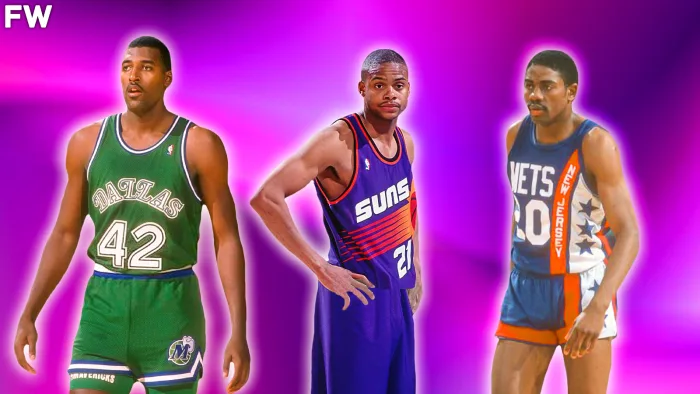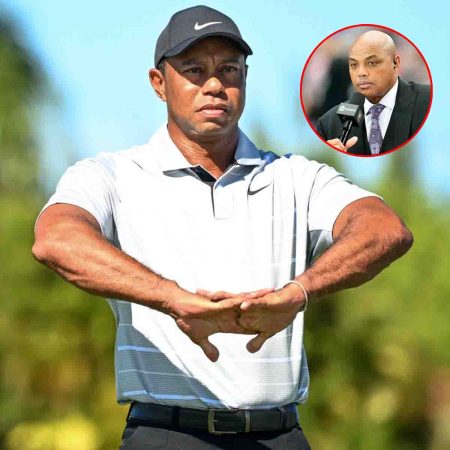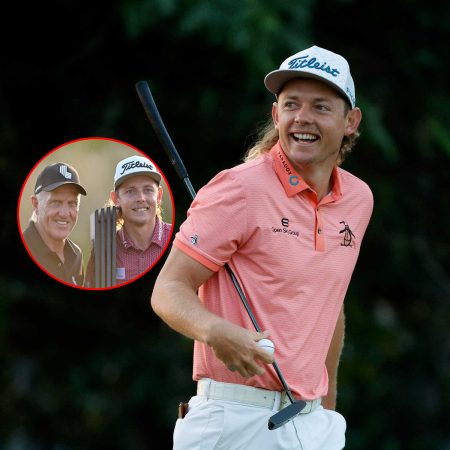Every once in a while, the NBA gets rocked by a scandal that can come with harsh consequences. From owners to players to any team employee, there are a set of rules and guidelines that everyone must follow set in place by the league. This is no different from any other job that one holds in the world as every player and employee represents the NBA as a whole, and reputation falls into their hands. When those rules are violated on an extreme level, the consequences can mean suspension or, even worse, permanent banishment from the league entirely.

Today, we are going to focus on the NBA players who have been handed down a permanent ban from the NBA and have never been reinstated with a chance to get back into the league in any capacity. You have already seen us discuss the players who were given the longest suspensions in NBA history last week. Now, we tell the stories of the players who were never allowed to step on an NBA court ever again as a result of their infractions. These missteps can range anywhere from substance abuse to point-shaving scandals that nearly tore the league apart in its early stages decades ago.
These are the NBA players who have been permanently banned from the league and never reinstated.
Ralph Beard
Credit: Fadeaway World
Among the earliest permanent bans in the NBA happened as a result of massive point-shaving scandals at the collegiate level. One of the first examples of this came from teammates Ralph Beard and Alex Groza with the Indianapolis Olympians in the early 1950s. Beard attended the University of Kentucky and was selected 10th overall by the Chicago Stags in the 1949 BAA Draft. He would be an All-NBA Team selection in his rookie season, averaging 14.9 PPG on 36.3% shooting.
The following season, Beard would be named an All-Star for the first and only time in his very short career. At the conclusion of the season, Beard was named and admitted to his involvement in a point-shaving scandal that rocked the NBA. Beard would receive a lifetime ban from the NBA but remain well-respected in the basketball community until his passing in 2007.
Alex Groza
Credit: Fadeaway World
Beard’s teammate at Kentucky and star center was Alex Groza. He was the star of his team despite being short for a center at a respectable 6’7’’. Groza possessed a lethal hook shot and devastating post moves to the basket for a player during his era. Groza was bound to go down as one of the greats before being implicated in the same scandal as Beard and also faced the same punishment.
Groza was named Rookie of the Year for the 1950 season averaging 23.4 PPG on a league-leading 47.8% shooting. Groza would again be an All-Star and 20.0 PPG scorer in his second season for the Olympians while leading the NBA for the second season in a row in field goal percentage at 47.0%. Groza is one of the only players in NBA history to average 20.0 PPG and 10.0 RPG for his career. After the outstanding start to his career, his hopes for continuing it were dashed when he admitted to his part in an NCAA point-shaving scandal from three years prior.
Norm Mager
Credit: Fadeaway World
There wasn’t much to be expected of Norm Mager when he entered the NBA with the Baltimore Bullets as the 50th overall pick in the 1950 NBA Draft. Mager was an average college player who really stepped it up toward the end of his collegiate career to even have a shot at being drafted into the NBA. He averaged 12.5 PPG in postseason play in his final year at college to help the CCNY Beavers win both the NIT and NCAA tournaments in the same season, the only college team to ever do so.
Mager would play the 1950-51 season with the Bullets and appear in just 22 games averaging 4.6 PPG and 2.0 RPG. His career would be cut short when he was implicated in what would forever be known as the CCNY point-shaving scandal. Mager and 32 players from seven different colleges around the country took money in order to manipulate the point spread in games. He received a lifetime ban and remained away from the game for life.
Gene Melchiorre
Credit: Fadeaway World
The final player of note in the 1950s CCNY point shaving scandal is Gene Melchiorre, who attended Bradley University. After serving in the U.S. Army and playing for their team, Melchiorre was recruited heavily by numerous colleges across the country. He played guard for Bradley despite standing just 5’8’’ and weighing 175 pounds. Melchiorre led Bradley to numerous appearances in both the NIT and NCAA championship games but fell to CCNY.
Melchiorre was widely recognized as one of the best offensive players in the country due to his ability to score and pass at an elite level. He was so admired, in fact, that the Baltimore Bullets made him the first overall pick in the 1951 NBA Draft. Unfortunately, Melchiorre would be implicated in the CCNY point-shaving scandal before ever playing a game and would be permanently banned from the league as a result.
Jack Molinas
Credit: Fadeaway World
Jack Molinas was a star during his college days at Columbia University. During his time with the team from 1950-1953, he led the team in scoring and set school records in the process. Those records eventually fell, as most records usually do. Molinas was then selected third overall by the Fort Wayne Pistons in the 1953 NBA Draft, and his professional career was underway.
Molinas would average 11.6 PPG and 7.1 RPG over the course of his first 32 games in the 1953-54 season and all looked well to start his NBA career. The promise of Molinas’ career would soon be cut short for good. Molinas was found to be betting on his own team, the Pistons, while actively playing for them. Molinas was permanently banned from the NBA in 1953-54, a suspension until his death in 1975 at just 43 years old.
Roger Brown
Credit: Fadeaway World
Roger Brown’s banishment from the NCAA and NBA is one of the most interesting cases on today’s list. Brown was a star at George W. Wingate High School in Brooklyn, New York, and was ready to sign on to the University of Dayton to continue to play basketball at the next level. However, before he could ever step foot onto Dayton’s campus, Brown was banned from the NCAA and the NBA for associating with Jack Molinas, a Fort Wayne Pistons player who had been banned for betting on games.
Brown never committed a crime and was never even found guilty of point-shaving. His only infraction was associating with Molinas. Brown would go on to have a stellar career in the ABA with the Indiana Pacers, though. Brown would be an All-Star in four out of his first five seasons in the ABA and had three straight 20.0 PPG seasons or better from 1969 thru 1971. Brown would win three ABA championships with the Pacers during his career from 1968 thru 1975 but was forced to retire with the 1975 merger coming to fruition.
John Drew
Credit: Fadeaway World
After leading his high school team to a state championship in 1972, John Drew set his sights on Gardner-Webb University. With the school, he would 24.4 PPG as a freshman, which went up to 25.9 PPG and 13.0 RPG as a sophomore. Drew decided that his college career was over, and it was time to start making money as he would be selected in the second round of the 1974 NBA Draft by the Atlanta Hawks.
Drew would be a huge asset for the Hawks in the 70s as he developed into a 20.0 PPG scorer nearly immediately. He was an All-Star by his second season and again in 1979-80. After three years with the Jazz from 1983 thru 1985, Drew would be permanently banned from the NBA due to his repeated substance abuse issues and rehab stints. Drew ran into a host of issues off the court as well. He is still the highest-scoring 25th overall pick in NBA history and a legend in Atlanta Hawks history.
Chris Washburn
Credit: Fadeaway World
Chris Washburn was a 6’11’’ center who played with the Golden State Warriors and Atlanta Hawks for the 1987 and 1988 seasons. Washburn was a two-year star at NC State University, where he became an All-ACC player during his senior year when he averaged 17.6 PPG and 6.7 RPG on 56.2% shooting. The Warriors would make him the third overall pick in 1986, but it came with a price.
It was well-known at this time that Washburn had struggles with substance abuse. He would play a total of 72 games in the NBA with the Warriors and Hawks before being permanently banned from the league due to three failed drug tests in three years. Washburn is considered to be one of the biggest draft busts in NBA history after his ban cut his career well short. Washburn’s son, Julian, would play 18 games for the Grizzlies in 2018-19 as well.
Roy Tarpley
Credit: Fadeaway World
After a successful career in college at the University of Michigan, Roy Tarpley was the seventh overall pick to the Dallas Mavericks in the 1986 NBA Draft. He would average 7.5 PPG and 7.1 RPG as a rookie for Dallas, who played 75 games. In his second season in 1988, Tarpley was named the NBA’s Sixth Man of the Year when he averaged 13.5 PPG and 11.8 RPG in 81 appearances for the Mavericks as well.
Tarpley was only steadily getting better as the 1990-91 season got underway, averaging over 20.0 PPG and 11.0 RPG through five games. However, Tarpley would be suspended for the next three seasons after repeatedly failing drug tests. Tarpley would attempt a comeback in 1995 with Dallas playing 55 games and averaging 12.6 PPG along with 8.2 RPG. Tarpley would get permanently banned after the 1995 season due to another failed drug exam, killing the career of one of the most promising stars in Mavericks’ history.
Richard Dumas
Credit: Fadeaway World
The story of Richard Dumas is one of the more sadder ones on this list today. Dumas was a three-year player at Oklahoma State before declaring for the NBA Draft and was eventually selected by the Phoenix Suns with the 46th overall pick. However, before he could even play a game, Dumas was suspended for his entire first year due to substance abuse issues. Dumas would not make his NBA debut until 19 games into the 1992-93 season.
Dumas was outstanding for the Suns during the 1992-93 season and averaged over 15.0 PPG to help them reach the NBA Finals. He was once again suspended for the entirety of the 1993-94 season before playing just 15 games for the Suns in 1995 and 39 games for the Sixers in 1996. After another failed drug test in 1996, Dumas was permanently banned from the NBA due to his repeated offenses.
Micheal Ray Richardson
Credit: Fadeaway World
The story of Micheal Ray Richardson and his permanent banishment from the NBA is a sad and unfortunate one that should have changed the way substance abuse issues were handled in the NBA. Richardson would be the fourth overall pick of the New York Knicks in the 1978 NBA Draft and go on to become one of their greatest icons during the 1980s. He would earn three All-Star appearances with the team as well as two steals titles and an assists title. In his four seasons with the Knicks, he averaged 14.2 PPG, 6.0 RPG, 7.1 APG, and 2.6 SPG.
After he was through with the Knicks, Richardson would become an All-Star once again for the Nets in 1985. For most of this time, Richardson was dealing with substance abuse issues that would ultimately cost him games through suspensions and rehab stints along the way. Instead of getting him help, the league banished him in 1986 after another failed test. Richardson would be eligible for reinstatement in 1988 but would never even attempt to come back and never played in an NBA game again.
Source: fadeawayworld








